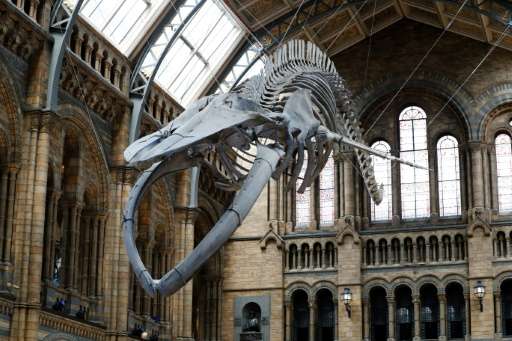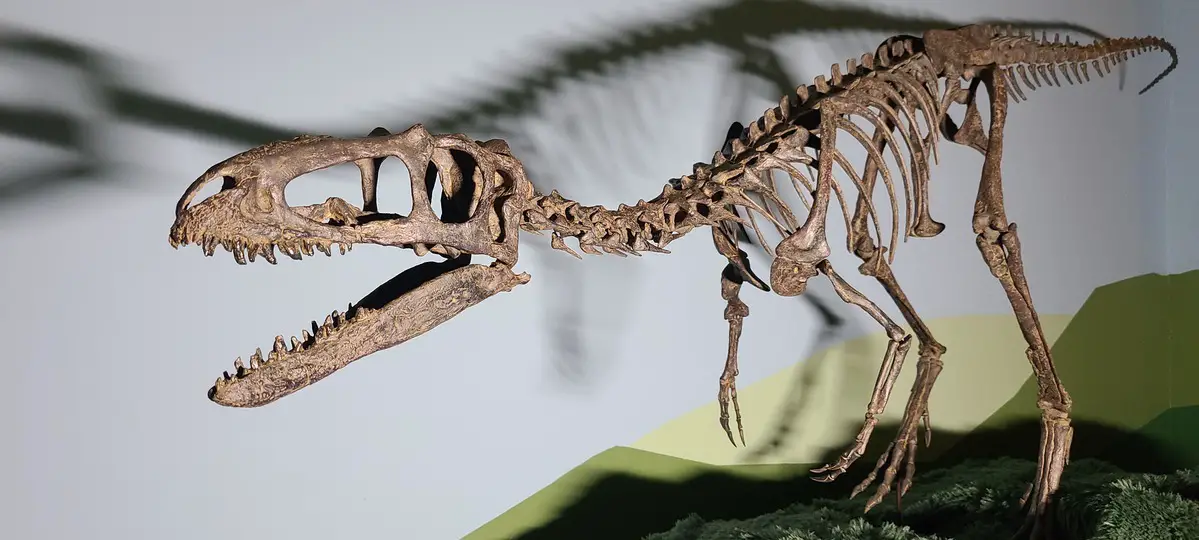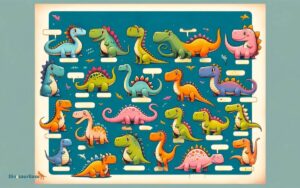Is the Dinosaur at the Natural History Museum Real? Unveiled!
Yes, the Natural History Museum in London displays an iconic dinosaur skeleton cast. This cast, a replica of a Diplodocus named Dippy, served as a centerpiece until 2017.
Visitors to the Natural History Museum are greeted with impressive sights that fire up the imagination and transport them to the prehistoric world. Whether you’re a dinosaur enthusiast or simply curious about ancient life, the museum offers a treasure trove of exhibits.
The Diplodocus skeleton known as Dippy had graced the Hintze Hall for over 100 years, captivating audiences and acting as a symbol of the museum. While Dippy embarked on a UK tour, it was replaced by the equally magnificent blue whale skeleton, ensuring the tradition of awe-inspiring entries continues. The museum, renowned for its comprehensive collections, research contributions, and educational displays, allows guests to explore not only the age of dinosaurs but also the full breadth of natural history.

Credit: phys.org

The Natural History Museum’s Dinosaur Exhibit
Step back in time and walk with giants at the Natural History Museum’s Dinosaur Exhibit. This exhibit brings the ancient world back to life, captivating visitors of all ages. Experience a journey millions of years in the making. Discover the incredible creatures that once roamed our planet.
Jurassic Ambiance
Surround yourself with the sounds of a Jurassic jungle. The dinosaur exhibit is not just a visual feast; it’s an immersive adventure. Hear the distant roar of a T-Rex and the rustling of prehistoric foliage. Interactive displays and lifelike environments transport you to a time long past.
Prehistoric Prodigies On Display
Marvel at the majestic skeletons and fossils of dinosaurs. Each bone tells a story, revealing secrets of survival and evolution. The exhibit showcases an array of dinosaur species, from the mighty Stegosaurus to the agile Velociraptor.
- Tyrannosaurus Rex: Encounter the king of dinosaurs.
- Triceratops: View the three-horned herbivore up close.
- Diplodocus: Gaze up at the long-necked giant.
Each dinosaur display includes engaging information. You’ll learn about their diets, habitats, and how they might have behaved. Young paleontologists can unearth fossils in interactive dig sites. The hands-on experiences make learning fun and engaging.
Dinosaur Authenticity Debates
Welcome to the fascinating world of prehistoric creatures, where the authenticity of dinosaur exhibits in museums sparks lively discussions. Controversies often swirl around these ancient beasts, stirring up questions about the realness of the bones on display.
Public Perception
Public interest in dinosaurs is as robust as ever. However, not all are aware that some displays are replicas.
- Original fossils are fragile and often incomplete.
- Replicas ensure the safety of the real bones.
- Visitors sometimes question the realism of the exhibits.
The museum aims to educate and inspire while preserving precious fossils for future study. Accurate signage and guides help clarify any confusion regarding authenticity.
Expert Insights
Experts play a crucial role in the presentation and preservation of dinosaur fossils. A panel of scientists and paleontologists confirm the integrity of exhibits.
| Expert Role | Responsibilities |
|---|---|
| Scientists | Research and verify fossil authenticity |
| Paleontologists | Provide context and historical accuracy |
| Conservators | Ensure the protection of real fossils |
The collective effort of these professionals maintains the museum’s integrity to both scientific standards and public expectations. By combining education with wonder, they foster a deeper appreciation for these magnificent creatures from our planet’s distant past.
Behind The Scenes: Creating A Dino Display
Welcome to the hidden world of dinosaur exhibitions!
The Natural History Museum’s dinosaur display dazzles visitors daily.
Yet, few know the craft behind these prehistoric showpieces.
Join us as we uncover the journey from fossil discovery to museum marvel.
Fossil Hunting
Dinosaur exhibits begin with fossil hunting, a meticulous process.
- Teams of paleontologists search remote locations.
- They uncover bones buried for millions of years.
- Every find is carefully recorded and extracted.
These initial steps ensure that each bone tells a story.
Assembly And Restoration
Once in the lab, the bones undergo detailed examination.
| Stage | Process |
|---|---|
| Cleaning | Bones are freed from rock and debris. |
| Assembly | Experts rebuild the dinosaur skeleton. |
| Restoration | Missing parts are modelled and added. |
This ensures that the final display is as accurate as possible.
Artistry In Replicas
Not all displayed dinosaurs are real fossils.
Artistic replicas play a vital role as well.
- Artists sculpt life-like bones using scientific data.
- Replicas are painted and textured for realism.
- The final product complements the genuine fossils.
Incredible skill brings these ancient giants back to life.

Credit: www.dailymail.co.uk
Real Vs Replica: Understanding The Exhibit
Step into the Natural History Museum and embark on a prehistoric adventure. Here, mighty dinosaurs captivate imaginations. But what’s real and what’s a replica? Let’s explore and understand the exhibit that brings these ancient creatures to life.
Authentic Fossils: Rarity And Restrictions
Real dinosaur fossils are a treasure – rare and precious. Displaying them comes with challenges. Museums often face strict rules that limit how these ancient artifacts can be shared with the public.
- Conservation laws protect fossils, preserving them for research.
- Extracting fossils is a delicate process, and not all survive the journey.
- Their immense value and fragility mean they must be handled with care.
These realities make genuine dinosaur fossils rare in exhibits. Instead, replicas often take center stage. They provide a detailed and accessible way to experience the size and form of these ancient beasts.
Advantages Of Using Replicas
Replicas hold significant advantages in museum displays. They serve as stand-ins for the real deal, and they come with several benefits.
- Replicas allow visitors to get up close without risking damage to priceless fossils.
- Museums can craft accurate replicas from original fossils, creating a true-to-life display.
- They stand up to the touch and interaction – essential for hands-on exhibits.
Interactive and engaging, replicas invite you to explore without fear of causing harm. These detailed duplicates help museums educate and inspire while preserving the real specimens for future generations.
| Aspect | Real Fossils | Replicas |
|---|---|---|
| Rarity | Extremely rare | Commonly used |
| Interaction | Limited due to fragility | Allows hands-on learning |
| Conservation | Subject to preservation laws | Easily maintained |
Educational Impact Of Dinosaur Exhibits
Vivid skeletons and lifelike models of dinosaurs capture imaginations at the Natural History Museum. These exhibits do more than amaze. They educate. Visitors of all ages gain insights into a world millions of years old. With each display, there lies an opportunity to learn, inspire, and understand the history of life on Earth.
Inspiring Future Paleontologists
Dinosaur exhibits bring prehistoric times to life for many curious minds. This often sparks a lifelong passion in young guests. Hands-on activities, like digging for fossils, let kids step into the shoes of paleontologists. Witnessing the grandeur of a Tyrannosaurus rex towering over them can light the fire for the next great fossil discoverer.
Teaching Deep Time
The concept of ‘deep time’ is hard to grasp. Yet, dinosaur exhibits make it tangible. They show the vast timeline of our planet. A timeline with events positioned like markers on the way to present day. This visual learning helps kids comprehend that Earth’s history spans billions of years. Timelines often accompany the skeletons, giving a clear picture of the chronological journey of life.
- Scale models: Offer a perspective on size and environment.
- Interactive displays: Engage visitors in learning.
- Fossil exhibits: Show real evidence of ancient creatures.
- Informational placards: Provide context and fun facts.

Credit: phys.org
Advancements In Paleontology Display Techniques
Advancements in paleontology display techniques have transformed the way we view dinosaurs at the Natural History Museum. Gone are the days of static skeletons standing in silence. Now, visitors step into dynamic worlds where science and imagination meet. The latest displays offer a blend of education and entertainment, creating immersive experiences that fascinate visitors of all ages.
Technological Innovations
The dinosaur exhibits at the Natural History Museum feature cutting-edge technological innovations. High-resolution 3D modeling and augmented reality (AR) bring prehistoric creatures to life. Visitors can witness the majestic movements of dinosaurs through digital reconstructions, showcasing the ancient giants in action.
- 3D projections of dinosaurs show lifelike behaviors.
- AR apps allow guests to ‘interact’ with dinosaurs.
- Digital screens display fun facts with the tap of a finger.
Interactive Learning Experiences
Interactive components create a hands-on learning experience. Touchscreens, interactive games, and simulated digs immerse visitors in the world of paleontology. Young explorers can dig for fossils or piece together dino puzzles. This interactive approach helps visitors understand the science behind the exhibits in a fun and engaging way.
| Activity | Objective | Age Group |
|---|---|---|
| Fossil Dig Simulations | Teach excavation techniques | 5-12 years |
| Dino Puzzle Challenges | Illustrate anatomy links | 4-10 years |
| Interactive Touchscreens | Engage with dino trivia | All ages |
Conclusion
Visiting the Natural History Museum offers an unforgettable journey back in time. The presence of the towering dinosaur instills awe and sparks curiosity in visitors of all ages. Whether you’re a history buff or a family seeking an educational excursion, the dino display is a must-see.
Make sure to add it to your itinerary for a truly prehistoric experience!



